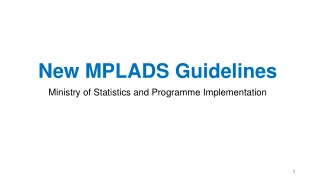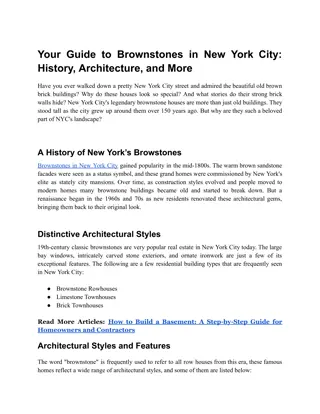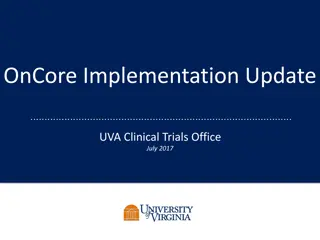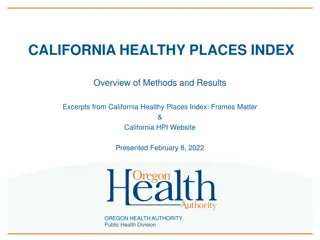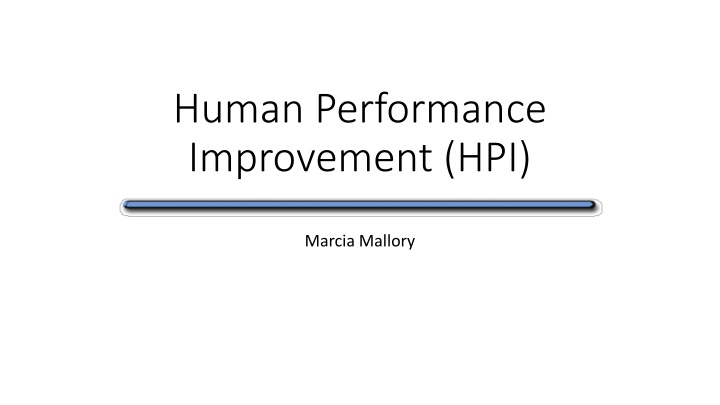
Human Performance Improvement in Organizations
Learn about the concept of Human Performance Improvement (HPI) and its transition from Human Performance Technology. Explore how HPI aims to enhance productivity and competence through systematic methods, interventions, and technology in organizations. Delve into the history and principles behind HPI to grasp its significance in optimizing human behavior and performance.
Download Presentation

Please find below an Image/Link to download the presentation.
The content on the website is provided AS IS for your information and personal use only. It may not be sold, licensed, or shared on other websites without obtaining consent from the author. If you encounter any issues during the download, it is possible that the publisher has removed the file from their server.
You are allowed to download the files provided on this website for personal or commercial use, subject to the condition that they are used lawfully. All files are the property of their respective owners.
The content on the website is provided AS IS for your information and personal use only. It may not be sold, licensed, or shared on other websites without obtaining consent from the author.
E N D
Presentation Transcript
Human Performance Improvement (HPI) Marcia Mallory
Human Performance Improvements transitioned from what was known as Human Performance Technology.
Human Performance Improvement Human Performance Improvement and Technology Technology are terms that can be used interchangeably are terms that can be used interchangeably and Human Performance Human Performance Human performance improvement is what we wish to achieve, and Human performance technology is the means we use to achieve it. Both are viewed as being synonymous. The term human performance improvement is relatively new.
Definition Definition According to the International Society for Performance Improvement (ISPI) Human Performance Improvements (HPI), a systematic approach to improving productivity and competence, uses a set of methods and procedures -- and a strategy for solving problems -- for realizing opportunities related to the performance of people. More specific, it is a process of selection, analysis, design, development, implementation, and evaluation of programs to most cost- effectively influence human behavior and accomplishment. It is a systematic combination of three fundamental processes: performance analysis, cause analysis, and intervention selection, and can be applied to individuals, small groups, and large organizations. Taken one word at a time, a description of this performance improvement strategy emerges. Human: the individuals and groups that make up our organizations Performance: activities and measurable outcomes Technology: a systematic and systemic approach to solve practical problems http://www.ispi.org/content.aspx?id=54
History of HPI History of HPI Audiovisual Movement Thomas F. Gilbert Apprenticeship Workplace Literacy Brought to life what could not always be experienced directly. Educators brought the world to the classroom. General systems theory gave birth to a euphoria of effective training- learning technology that was based on the best knowledge acquired from both human and physical sciences. Father of HPT Graduate student of B.F. Skinner and was formed in the principles and practices of behaviorism. Behavioral Engineering Model Fascinated with the science of learning, formed the National Society for Programmed Instruction (NSPI). A person was taken into service and taught a trade. Learned through observation, practice, and feedback. Industrial Revolution of the 19th century gave rise to the need of literate workers. Public education arose to provide basic reading and calculation skills.
HPI is results-based and systematic. The process is driven by a business need and a performance need, and justified by the results of a cause analysis. The HPI process helps you to articulate your business goals, link these goals to human performance, diagnose the current state of performance in the organization, find the root causes for performance deficiencies, implement solutions, and evaluate the results of the interventions.
but at the core of HPI is Human Capital but at the core of HPI is Human Capital Human capital has been empirically shown to yield higher rates of return than physical capital. Performance Gap: The difference between actual performance and ideal performance (Rothwell, 2007)
There are several There are several Performance Technology Models Human Human Performance Technology Models Some of the more popular ones are
Gilberts Behavior Engineering Model Gilbert s model lays out six major categories of variables affecting work- place performance and is still used as a fundamental analytic HPI tool Gilbert s model focuses on two distinct factors of performance the environment and the individual s behaviors which can be viewed from three perspectives information, instrumentation, and motivation. The BEM uses these factors and components to diagnose possible influences on behavior and identify strategies for performance improvement.
Mager Mager and Pipe Performance Analysis Model and Pipe Performance Analysis Model In 1970, Robert Mager and Peter Pipe developed a model to aid in the analysis of performance. The model is designed to help troubleshoot performance problems rather than provide a comprehensive analysis perspective (Rothwell, Hohne, King, 2007). It is simplistic and designed like a flowchart with decision points to guide you through the analysis. This simplicity makes the Mager and Pipe model extremely powerful (Rothwell, Hohne, King, 2007). It easily goes through a systematic process to address a performance problem.
Geary Geary Rumler s Rumler s Model Model Goals, Design, Management Organizational Process, Jobs Specifications, task support, consequences, feedback, skills & knowledge, capacity
HPT Model of the International Society for HPT Model of the International Society for Performance Improvement (ISPI) Performance Improvement (ISPI)
PACADDIE vs. ADDIE PACADDIE vs. ADDIE PACADDIE Performance Analysis Cost Analysis Design Development Implementation Evaluation A general systems process model associated with HPT; an acronym for Analysis (Performance & Cause Analysis), Design, Development, Implementation, and Evaluation (Rothwell, 2007).
CONCEPT MAP CONCEPT MAP Human Performance Improvement HPI is a movement with a straightforward mission that is aligned with the vision. It draws from the parent field, Human Performance Technology, which contains an array of processes, tools, and resources; a scientific base; and a history of precedents that document attainment of valued results.
Business Analysis The first step in Gap Analysis is to determine your business goals and clarify the relationship of the goals to the performance of your employees. The HPI analysis must start by identifying the key business goals, and then consider the performance gaps that can be addressed to help your business work towards those goals.
Performance Analysis Performance Analysis Analyze the organization, environment, and individuals performance to specify performance gaps that are worth closing. Identify environmental causes of the performance gap and then individual sources of performance gap in a progressive troubleshooting manner. Prioritize Your Performance Gaps Note that although you may have identified a performance gap, it doesn t mean it s worth closing that gap. The best value to your business is to focus on performance gaps that will make an impact in reaching your business goals. The next step is to determine the priority of the gaps: How important is the identified gap? How often does the gap occur? How costly will it be to resolve the gap? Once you have determined what organizational goals are not being met because of a performance gap, you can take steps to close that gap. This will result in the desired performance state.
Gap Analysis Gap Analysis The gap analysis process is accomplished through discovery and inquiry: Who is the customer, or who is affected Identify business goals Whose performance is the problem What is the actual performance level What is the desired performance level Determine what performance is critical to achieve those goals, Determine which performance outcomes have significant gaps, Figuring out what has caused those gaps.
Cause Analysis Overcoming Assumptions It is important to understand what your goals are, and to see how the steps you are undertaking will work to complete the goals. It is critical to suspend solutions until the true root cause(s) is identified. We do not presume that training is the solution for a given performance gap. Cause Analysis is used to determine why the performance gap exists, then we chose the most effective intervention. Defining Cause Analysis Cause analysis starts at the end of the business process, identifying the goals of your business and then identifying the contributions of the departments, units, and individuals that produce the outcomes that satisfy those goals. Once the goals and outcomes have been identified, Cause Analysis considers the processes that produced the outcomes, the tasks that make up the processes, and finally the initial influences that affect the accomplishment of each task.
Intervention Selection Intervention Selection Match interventions and their features to the environmental and personal sources of performance gaps.
Intervention Implementation Intervention Implementation Use of change management, process consulting, employee development, and communication building.
Evaluation of Results Evaluation of Results Use of formative, summative, confirmative, and meta evaluations.
Development (Actual Performance State) Development (Actual Performance State) Modifications to environmental sources are cheaper and faster to create. Feedback, incentives Training, Job Aide, Manuals, Electronic Performance Support Systems, Knowledge Management Systems
In Assessing needs Analyzing Causes Designing Solutions Developing Solutions Implementing Solutions Evaluating Interventions
END Valued accomplishments Performance whose cost is considerably lower than the value of the result.
Questions & Comments Questions & Comments
References Foshay, W.R., Villachica, S,W., & Stepich, D.A. (2014). Cousins but Not Twins: Instructional Design and Human Performance Technology in the Workplace. In Handbook of Research on Educational Communications Gilbert, T.F.(2007). Human competence: Engineering worthy performance. San Francisco: Pfeiffer. Rothwell, W.J., Hohne, C.K., and King, S.B. (2007). Human Performance improvement: Building practitioner competence. Wilmoth, F.S, Prigmore, C. and Bray M. (2002) HPT Models: An overview of the major models in the field. Perf. Improv., 41: 16-24. doi: 10.1002/pfi.4140410806

